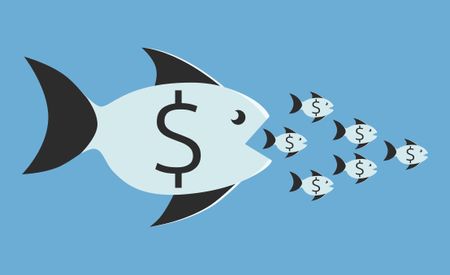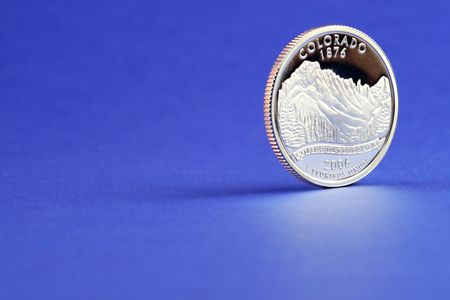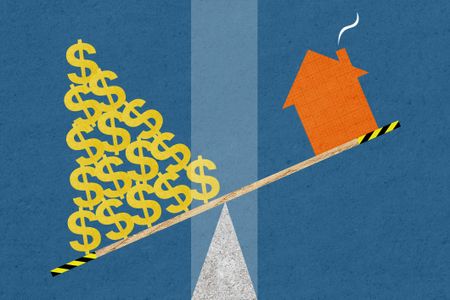Time to Take Tax-Free Stock Profits
If you qualify, use the capital gains break this year.
OUR READER

Who: Lynne Spichiger, 65
Where: Belchertown, Mass.

Sign up for Kiplinger’s Free E-Newsletters
Profit and prosper with the best of expert advice on investing, taxes, retirement, personal finance and more - straight to your e-mail.
Profit and prosper with the best of expert advice - straight to your e-mail.
Question: Can I sell some winners to take advantage of the temporary 0% tax on capital gains for investors like me, then buy them right back?
Lynne believes she has a clever tax trick up her sleeve. She wants to sell some winning stocks sometime during 2012 to cash in on the expiring 0% tax rate for some taxpayers on long-term capital gains. But she wants to go on investing in her favorites, so she intends to buy back those shares. "This way, when I sell those stocks in the future, I'll have restarted at a higher cost basis and won’t be hit as hard with taxes," says Lynne.
Zero taxes and stock market profits are rarely in the same conversation, but Lynne, a self-employed grant writer and instructional designer who files taxes as single, is eligible for this benefit for two reasons. First, she expects her 2012 income to be small enough to qualify for the 0% capital gains provision, which phases out for single filers at a taxable income of $35,350 (the limit is $70,700 for joint returns). Second, she's held her winners, which include McDonald’s (symbol MCD) and Caterpillar (CAT), for more than one year. But before she acts, Lynne wants to be sure the strategy will work.
Good news for Lynne. She's on the right track. "That's a brilliant tax maneuver," says Sheryl Garrett, founder of the Garrett Planning Network. As long as Lynne avoids a few traps, she's off to the races.
The first pitfall would be allowing the gains to push her over the income limit. As it happens, Lynne says she wouldn’t mind overshooting the 0% income limit—and owing 15% tax on the slice of the profits that exceeds it—because she wants the money before she begins collecting Social Security in 2013. From that point on, if her taxable income tops $25,000, the government will tax up to half of her Social Security payments; if she earns more than $34,000, then up to 85% is taxable. Anyone on the verge of claiming Social Security should investigate whether it pays to grab capital gains early.
Trap number two would result from sloppy math or poor record keeping. Capital gains are calculated by subtracting what you paid for an asset (plus fees and commissions) from the sale price. But what happens if you’ve reinvested dividends, which is common with blue-chip stocks and almost automatic with mutual funds? That ratchets up your cost basis and reduces the capital gains or conceivably triggers a loss. Review your statements or check with your brokerage firm to make sure you report the proper gains.
Lynne's third hurdle is the risk that the stocks she plans to buy back will skyrocket before she can get back in, thus reducing her returns. Lynne says that she'd like to wait for a pullback before repurchasing her stocks. But with McDonald’s and Caterpillar more than holding their value, she may have a long wait. Fortunately, blue-chip stocks like hers are liquid; Lynne can buy back her shares whenever she wants.
It is generally unwise to let tax strategy dictate investment moves. But Lynne is an exception because she has access to an unusual tax break. "Lynne is working the tax system legally and effectively," Garrett says. You can't ask for more.
Get Kiplinger Today newsletter — free
Profit and prosper with the best of Kiplinger's advice on investing, taxes, retirement, personal finance and much more. Delivered daily. Enter your email in the box and click Sign Me Up.
Susannah Snider worked as a research-reporter and staff writer at Kiplinger Personal Finance Magazine. She went on to serve as managing editor for money at U.S. News, overseeing articles and content covering real estate, personal finance and careers. She is a certified financial planner professional and earned her CFP marks in 2019.
-
 Reduce Your Retirement Tax Risk With the Three-Bucket Strategy
Reduce Your Retirement Tax Risk With the Three-Bucket StrategySplitting retirement funds into three buckets with distinct tax treatments can help you avoid a nasty tax bill down the line. Here's how the strategy works.
By Bryan S. Slovon, Investment Adviser Published
-
 Social Security Phone Wait Times: What to Expect and the Best Times to Call
Social Security Phone Wait Times: What to Expect and the Best Times to CallThe Social Security Administration receives 80 million calls every year. Timing is everything if you want to get through.
By Donna LeValley Published
-
 Did Florida’s Chance at $1,000 in Property Tax Rebates Vanish?
Did Florida’s Chance at $1,000 in Property Tax Rebates Vanish?State Taxes The Florida Legislature bypassed Gov. Ron DeSantis’ wish to cut property taxes and instead voted to lower the state’s sales tax.
By Gabriella Cruz-Martínez Published
-
 How Caregivers for Adults Can Save on Taxes in 2025
How Caregivers for Adults Can Save on Taxes in 2025Tax Breaks Caring for your parent or spouse can be stressful, but the IRS offers tax breaks for qualifying taxpayers. Here they are.
By Kate Schubel Published
-
 New South Carolina Income Tax Cut Might Eat Your Cash
New South Carolina Income Tax Cut Might Eat Your CashState Taxes South Carolina’s flat income tax bill could have the majority of residents paying higher income taxes. Find out how.
By Kate Schubel Published
-
 Tax-Deductible Home Improvements for Retirement in 2025
Tax-Deductible Home Improvements for Retirement in 2025Retirement Taxes Your aging-in-place plan could benefit from the medical expense tax deduction. But watch out for capital gains and property taxes.
By Kate Schubel Published
-
 New Colorado Tax Credit: What’s the Scoop?
New Colorado Tax Credit: What’s the Scoop?State Tax Everything you need to know about the Colorado family affordability tax credit in 2025.
By Kate Schubel Published
-
 Key Family Tax Breaks Are on the GOP Chopping Block This Year
Key Family Tax Breaks Are on the GOP Chopping Block This YearTax Credits Several tax breaks, including the Child Tax Credit, may face reforms or be cut entirely as lawmakers seek revenue for Trump’s tax plans.
By Gabriella Cruz-Martínez Last updated
-
 What's Going on With New Jersey Property Tax Programs?
What's Going on With New Jersey Property Tax Programs?Property Tax ANCHOR and ‘Senior Freeze’ just got a refresh, and there’s a new program: Stay NJ. Learn how to save on New Jersey property taxes.
By Kate Schubel Published
-
 Five States With the Largest EITC Checks
Five States With the Largest EITC ChecksEITC Households in these states received a larger Earned Income Tax Credit (EITC) last year.
By Gabriella Cruz-Martínez Published